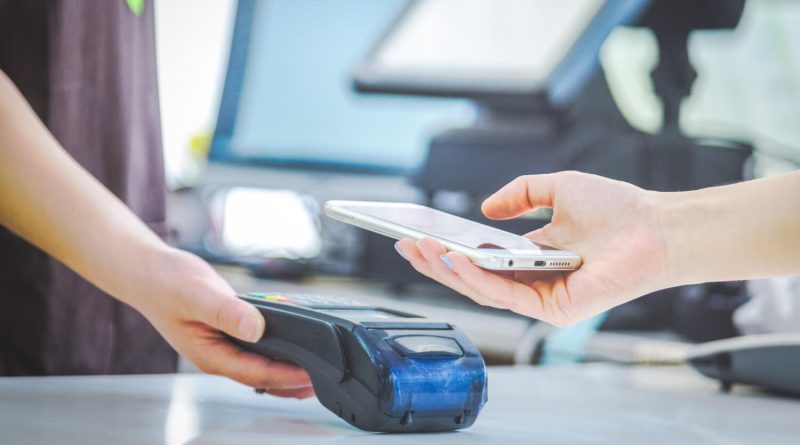How To Integrate Payment Terminal with Magento POS System?
If you want to use Magento to leverage your eCommerce business, you need to adopt a Magento POS system and a payment terminal to process checkout and improve efficiency. In this guide, we will show you how to integrate a payment terminal with the Magento POS system and create a complete ecosystem to gain an advantage in the retail industry.
What is a POS terminal?
A POS terminal is a device that contains hardware and software to process payments. For instance, POS terminals can be smartphones with built-in card readers which can print receipts, scan barcodes, send invoices, etc. With a strong POS terminal, you can process payments quickly and securely, giving your customers a smooth shopping experience.
POS terminals are a part of the broader point-of-sale (POS) system. The top POS system can have more advanced functionalities than merely accepting transactions, such as inventory management, sales management, and employee control features. Take Magestore Magento POS for example.
POS terminals you choose for your business should be able to handle all of the following options: in-store, online, and on the go.
How to Choose the Best POS Terminal
POS terminals can be used for various activities depending on your purpose. To choose the most suitable POS terminal, you should evaluate these factors:
Business Model
If you only sell online without a physical location, a countertop POS system should be preferred over a mobile POS system and vice versa. Usually, POS software is equipped with mobile devices like tablets or smartphones and may be used in conjunction with a card reader. This is how you can turn your smartphone into a small-scale POS terminal.
Payment method
The POS terminals should be able to accept all orders paid with cash, credit card, or debit card. Customer experience must be not disrupted when checkout, so you can consider extra features for your POS terminal. For example, using QR codes and peer-to-peer payment applications, or allowing payment without the Internet.
Magestore POS system can integrate with payment terminals that use Web Application technologies like Web API, Cloud API, and Javascript SDK. The smooth processing will provide all payment totals instantly to your connected payment device.
Cost
Think about the money you’re willing to pay for a POS terminal. Note that apart from the hardware, you need to invest in POS software and pay for transaction processing costs as well.
If you already have a POS terminal, you can link it to a Magento POS system with a little fee, but you can save money on terminal replacement. Magestore POS system will help you make the most of your POS terminal, speed up checkout and improve customer experience.
How To Integrate Payment Terminal with Magento POS System?
Step 1. Select your Payment Terminal
First of all, you need to choose the correct payment terminal to provide appealing payment options for your customers. Cash, bank transfer, debit cards, credit cards, mobile payment with QR codes, etc are some common payment methods for retailers and entrepreneurs. You should select a terminal that can handle the payment options and meet your business’s needs.
Step 2. Prepare for the integration
Based on the layout of your store, the required equipment can vary. For example, payment terminals, cash registers, barcode readers, and receipt printers are requested by certain establishments. On the other hand, some businesses only need an iPad.
To connect the terminal to the POS system, you must first link the terminal to the workplace. There’re many options to arrange POS and terminal interaction.
Semi-integrated and fully integrated
There’re 2 typical methods for integrated terminal solutions between a POS system and a payment terminal: semi-integrated and fully integrated approach.
In a semi-integrated manner, the terminal often acts as a standalone processing device. It can collect payment information, format relevant messages, and send them to the gateway or processor for authorization.
In a fully integrated method, a terminal is used as a reader, acquiring card information to feed the POS system. Then, the POS system will format the information into relevant messages, and transmit them to the gateway for processing.
Using an SDK for integration
SDK is the most popular and extensively adopted technique. With appropriate SDKs, generic drivers like as uPOS, JavaPOS, and others can be supported by current POS systems.
However, this method has a downside. It isn’t always compatible with web apps that have no granted access to an operating system’s low-level services. While these programs can rely on ActiveX controls or Java Applets, these applications have their own set of security and deployment difficulties.
Using a REST API for integration
Another method is using a REST API to connect to the terminal. This is the friendliest option for users since you don’t have to interact with native codes. You can pick any program that can make web-service calls to interface with and control the terminal.
The drawback of this approach is that the logic behind the terminal’s behavior often runs as the terminal application within the device. Any changes to the application require you to update the terminal as well. Therefore, without a terminal management system, it is challenging to maintain such a configuration.
Step 3. Integration
Once you prepared everything you need in step 2, you’re ready for the integration process to synchronize the POS system and payment processor.
A smooth connection will allow data to flow seamlessly from the terminal to the POS system. It removes the need to manually enter customer and payment card information at the checkout counter. Since your POS is linked to your payment terminal, all relevant data is recorded in the POS system when you use your terminal to start the transaction.
Step 4. Test in an Environment
Before taking the terminal to your store, you should use it in a test environment to ensure there is no error. The test stimulation like Sandbox can replicate orders, invoicing, payments, and transactions. You can log your POS terminal into that environment and place test POS orders. If a new POS feature is published, you can download the updated version of Sandbox which sample the new feature.
Step 5. Complete the integration
After the complete testing, your POS terminal is now linked to your Magento POS system. No additional setup is required.
Customers can now shop and pay immediately via your terminal, and their purchase information is collected in your POS system, fully synced with your sales data and inventory data.
In conclusion
Above are the 5 steps to integrate your payment terminal with the Magento POS system. When you have connected your terminal and Magestore POS, you can simplify the checkout process, proceed with transactions quickly, and offer a better shopping experience to your customers.



